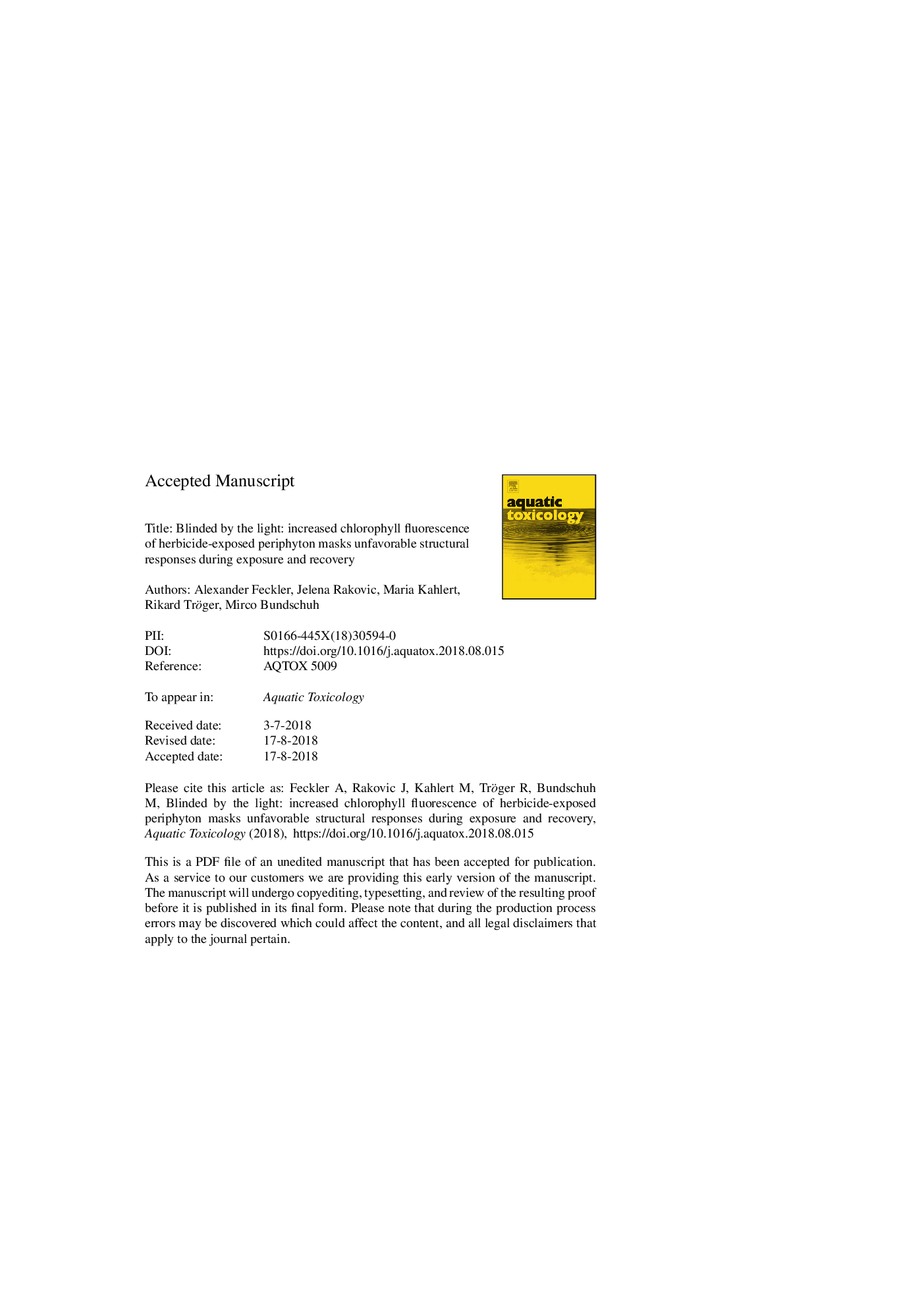| کد مقاله | کد نشریه | سال انتشار | مقاله انگلیسی | نسخه تمام متن |
|---|---|---|---|---|
| 8883634 | 1625902 | 2018 | 32 صفحه PDF | دانلود رایگان |
عنوان انگلیسی مقاله ISI
Blinded by the light: Increased chlorophyll fluorescence of herbicide-exposed periphyton masks unfavorable structural responses during exposure and recovery
ترجمه فارسی عنوان
پرده برداری از نور: افزایش فلورسانس کلروفیل علف کش در معرض ماسک واکنش های ساختاری نامطلوب در هنگام قرار گرفتن و
دانلود مقاله + سفارش ترجمه
دانلود مقاله ISI انگلیسی
رایگان برای ایرانیان
کلمات کلیدی
موضوعات مرتبط
علوم زیستی و بیوفناوری
علوم کشاورزی و بیولوژیک
علوم آبزیان
چکیده انگلیسی
In surface waters within agricultural catchments, periphyton - i.e., biofilms containing algae, heterotrophs, and associated detritus - is subjected to multiple stressors including herbicides. Although herbicide effects on periphyton are frequently studied, the focus has been on photosynthesis-inhibiting herbicides while other modes of toxic action have received little attention. Against this background, a 21-days-lasting bioassay was conducted, during which mature periphytic communities were exposed to the carotenoid-biosynthesis-inhibiting herbicide diflufenican for 12 days (up to 10âμg/L; nâ=â4), followed by a 9-days-lasting recovery phase in herbicide-free medium. Variables related to periphytic functioning (photosynthetic efficiency and non-photochemical quenching) and structure (pigment concentrations, biomass, and algal community structure) were quantified every third day during both experimental phases. Exposure to ⥠0.2âμg diflufenican/L resulted in 20-25% and 25-30% lowered carotenoid and chlorophyll a concentrations, respectively, likely explained by a reduced algal biovolume as well as diflufenican's mode of toxic action and thus a shift towards a higher heterotrophy of the communities. Despite these adverse effects on the photosynthetic apparatus, the photosynthetic efficiency increased by up to â¼15% under diflufenican exposure judged on higher chlorophyll fluorescence. This may be explained by an up to â¼60% reduced non-photochemical quenching as well as binding of diflufenican to the pigment-protein membrane complex of the photosystem II, two processes causing higher chlorophyll fluorescence. Additionally, phototrophs may have actively increased energy assimilation to cope with higher energy demands under chemical stress. Although periphyton showed some recovery potential following the exposure phase, observed as increasing chlorophyll a concentrations and non-photochemical quenching, periphyton may not be able to quickly recover from stress given the persistent increase in the photosynthetic efficiency. While the processes underlying the observed effects yet remain speculative, the results suggest a shift towards a higher degree of heterotrophy in periphytic communities ultimately increasing the importance of heterotrophic ecosystem functions at impacted sites over the long term.
ناشر
Database: Elsevier - ScienceDirect (ساینس دایرکت)
Journal: Aquatic Toxicology - Volume 203, October 2018, Pages 187-193
Journal: Aquatic Toxicology - Volume 203, October 2018, Pages 187-193
نویسندگان
Alexander Feckler, Jelena Rakovic, Maria Kahlert, Rikard Tröger, Mirco Bundschuh,
